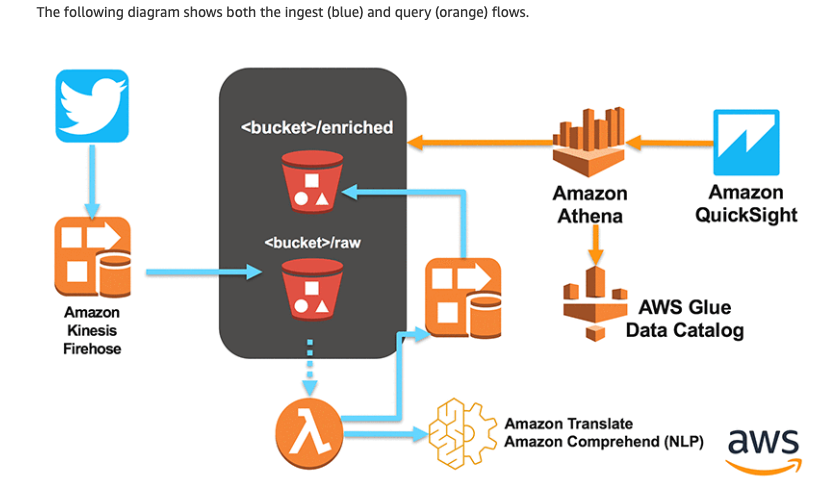Organize and Analyze Social Media Sentiment
Question
Your marketing department wishes to understand how their products are being represented in the various social media services in which they have active content streams.
They would like insights into the reception of a current product line in order to plan for the roll-out of a new product in the line in the future.
You have been tasked with creating a service that organizes the social media content by sentiment across all languages so that your marketing department can determine how best to introduce the new product. How would you quickly and most efficiently design and build a service for your marketing team that gives insight into the social media sentiment?
Answers
Explanations
Click on the arrows to vote for the correct answer
A. B. C. D.Answer: D.
Option A is incorrect since this option is not the quickest to implement nor is it the most efficient, since developers will have to code a react UI and build an end-point to connect the sentiment service to the React or Angular UI.
Option B is incorrect since this option is also not the quickest to implement nor is it the most efficient, since developers will have to code a react UI and build an end-point to connect the sentiment service to the React or Angular UI.
Option C is incorrect since Amazon Lex is used primarily for building conversational interfaces into any application using voice or text.
This would not give you the most efficient solution to the problem.
Option Dis correct since it is the most efficient and quickest way to implement the solution.
Amazon Kinesis Data Firehose is used to capture and prepare the social media content.
A lambda function can be used to analyze the social media content using Amazon Translate and Amazon Comprehend.
Amazon Athena to query the data produced by the lambda function.
Use Amazon QuickSight to produce the dashboard.
(See the AWS Machine Learning blog post titled: Build a social media dashboard using machine learning and BI services:https://aws.amazon.com/blogs/machine-learning/build-a-social-media-dashboard-using-machine-learning-and-bi-services/)
Diagram:
Here is a screenshot from the AWS Machine Learning blog that shows the desired solution:
Reference:
Please see the Amazon Comprehend documentation: https://aws.amazon.com/comprehend/.

The best option for quickly and efficiently designing and building a service to organize social media content by sentiment across all languages for the marketing department is option B: Use the DetectSentiment Amazon Comprehend API as a service to provide insight data to the marketing team's internal application platform. Build a dashboard into the application platform using React or Angular.
Option A suggests using the scikit-learn python library to build a sentiment analysis service, which can be time-consuming and may require additional resources to scale. Additionally, building a dashboard from scratch using React or Angular can also be time-consuming.
Option C suggests using the Amazon Lex API, which is primarily used for building chatbots, and may not be the best fit for sentiment analysis. Building a dashboard using React or Angular can also be time-consuming.
Option D suggests using Amazon Kinesis to stream data to S3, Amazon Translate to translate it, Amazon Comprehend to extract sentiment, and Amazon Athena with Amazon QuickSight to build a natural-language-processing (NLP)-powered social media dashboard. While this option may provide more detailed insights, it is also more complex and time-consuming to implement, and may require more resources.
Option B, using the DetectSentiment Amazon Comprehend API as a service, is the quickest and most efficient solution for providing sentiment analysis across all languages. The Amazon Comprehend API uses natural language processing (NLP) to analyze text and determine the sentiment, making it a powerful tool for analyzing social media content. Additionally, building a dashboard using React or Angular can be done quickly and easily with pre-built components, allowing for a streamlined solution.
Overall, Option B is the best solution for quickly and efficiently building a sentiment analysis service to provide insight data to the marketing team's internal application platform.